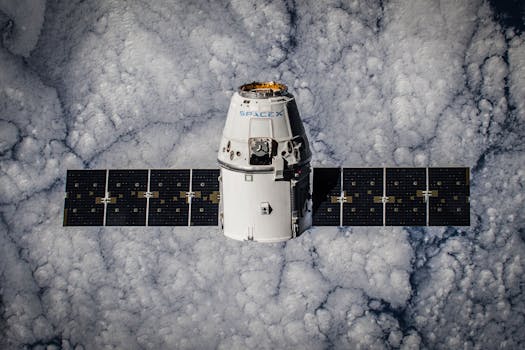Beyond the Atmosphere: The Future of Satellite Technology for Surveillance and Connectivity

Beyond the Atmosphere: The Future of Satellite Technology for Surveillance and Connectivity
Beyond the Atmosphere: The Future of Satellite Technology for Surveillance and Connectivity is an exciting and rapidly evolving field, with significant advancements in recent years. Satellite technology has come a long way since the launch of the first artificial satellite, Sputnik, in 1957. Today, satellites play a vital role in various aspects of our lives, including communication, navigation, weather forecasting, and surveillance. In this article, we will explore the future of satellite technology, with a focus on surveillance and connectivity.
The use of satellite technology for surveillance has become increasingly important in recent years. Satellites are used for Earth observation, monitoring climate change, tracking natural disasters, and providing critical infrastructure for communication and navigation. The development of high-resolution imaging satellites has enabled the collection of detailed images of the Earth’s surface, which can be used for a variety of applications, including mapping, agriculture, and disaster response.
Advancements in Satellite Technology
One of the most significant advancements in satellite technology is the development of small satellites, also known as cube satellites or nano satellites. These satellites are smaller, lighter, and less expensive than traditional satellites, making them more accessible to a wider range of organizations and individuals. Small satellites have enabled the creation of constellations, which are networks of satellites that work together to provide global coverage and continuous connectivity.
Another significant advancement in satellite technology is the development of reusable launch vehicles. Companies such as SpaceX and Blue Origin are working on reusable rockets that can launch satellites into orbit and then return to Earth, reducing the cost of access to space. This technology has the potential to make space travel more affordable and accessible, enabling the launch of more satellites and the creation of new space-based industries.
Surveillance and Connectivity Applications
Satellite technology has a wide range of applications in surveillance and connectivity. Satellites are used for Earth observation, monitoring climate change, tracking natural disasters, and providing critical infrastructure for communication and navigation. The development of high-resolution imaging satellites has enabled the collection of detailed images of the Earth’s surface, which can be used for a variety of applications, including mapping, agriculture, and disaster response.
In addition to surveillance, satellite technology is also used for connectivity. Satellites provide internet access to remote and underserved communities, enabling them to connect with the rest of the world. Satellite-based communication systems are also used for emergency response, providing critical communication infrastructure in the event of a natural disaster or other crisis.
Conclusion
In conclusion, the future of satellite technology is exciting and rapidly evolving. Advancements in surveillance and connectivity are leading the way, with significant implications for a wide range of industries and applications. As we continue to explore beyond the atmosphere, new opportunities for communication, navigation, and observation are emerging. The development of small satellites, reusable launch vehicles, and high-resolution imaging satellites is enabling the creation of new space-based industries and applications, and is paving the way for a more connected and sustainable future.